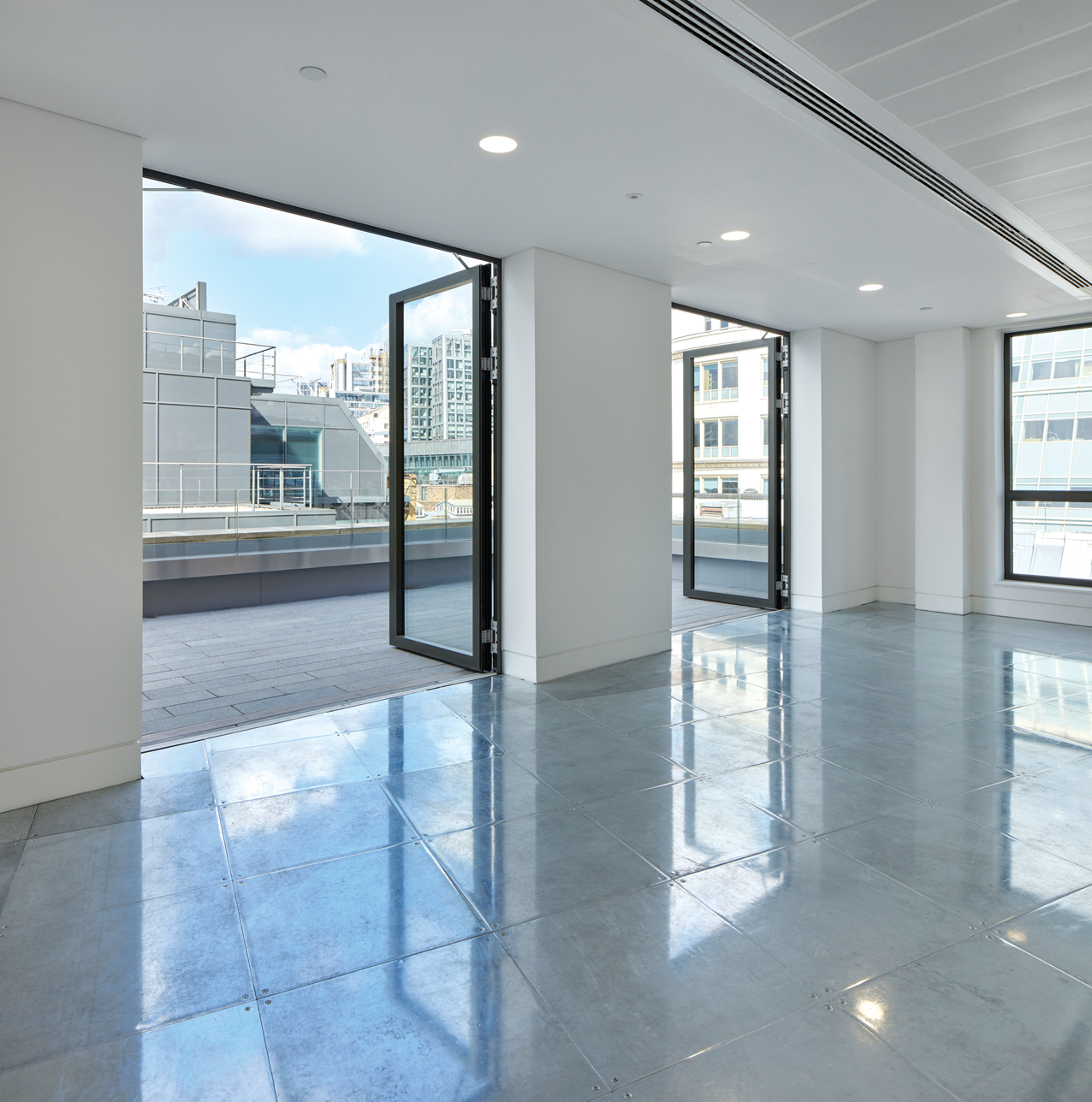
Gresham Street interior
Tenants of multi-let properties must be billed accurately for their heating and cooling energy use, under the Heat Network (Metering & Billing) Regulations 2014. These rules require landlords of properties where heating, cooling or hot water is supplied through a district or communal heating network to measure and bill tenants based on the actual energy they use.
Legal & General’s (L&G) Gresham Street building, in London, was one of the first projects to implement an automated tenant billing system, rather than apportioning costs based on a percentage of floor area.
Synapsys Solutions’ SIP Billing system was installed at the six-storey property, and measures each tenant’s heating and cooling energy consumption. Previously, this was only possible by manually reading lots of meters, processing data on spreadsheets, and producing calculations that were used to produce invoices – a process that was time-consuming and costly.
Billing at Gresham Street
Working alongside Hoare Lea – the building services engineer on the refurbishment of the top floors – Synapsys Solutions installed data loggers in the building, to collect information from meters on the tenants’ heating and cooling supply networks.
To produce accurate heating bills, the data loggers record half-hourly readings from all the tenant-area thermal meters, before feeding this information into the SIP Billing platform. Each tenant’s consumption – calculated on a monthly basis – is then applied, as a percentage, to the total heating and cooling consumption, acquired from the main gas or bulk meter.
The same principle is applied to the cooling demand, where cost is calculated based on a percentage of the overall chiller use.
Matt Gardner, business development team manager at Synapsys Solutions, says: ‘The ability to acquire accurate, half-hourly meter readings from each tenant at Gresham Street – and then apportion this figure as a percentage of the total energy consumed by the building – ensures each tenant only pays for their actual use, rather than their expected use based on the area that they let.’
Roger Macklin, associate director at Hoare Lea, says a position must also be taken on whether to allocate additional costs incurred during the production of heat – for example, the gas consumed by the boilers and the electricity used by the circulation pumps. ‘You calculate how much heat is consumed by each tenant, divide that by the total energy used, and apply that ratio to gas consumption,’ he says.

Legal & General’s Gresham Street building
The system is fair, Macklin adds, because if – for example – only one tenant is working out of hours, the other five are not obliged to contribute to the cost of running the heating system at that time.
Debbie Hobbs, head of sustainability at LGIM Real Assets, adds: ‘If a call centre is working 24-7, and another office works 9-5, is it fair to bill them based on square footage? Billing technology is making this fairer.’
Cost of commissioning
Commissioning and validation of meters is essential for rooting out issues with reverse polarity, loose connections or wrong meter locations, and ensuring that accurate bills can be produced.
At Gresham Street, Hoare Lea and Synapsys Systems did simple checks on the metering by making sure the secondary meter readings equalled the primary-meter output from the boilers.
Point-to-point verification was also carried out, to ensure the values at the meter were the same as those on the data logger.
A meter – which must be MID compliant – is made up of three components: a flow sensor, to measure the water flow rate; a pair of temperature probes, measuring the difference between the flow and return pipes; and a calculator, which uses the quantities of the other two components to work out the amount of heat generated or used.
Given that the tenants are being charged for the energy they use, it is important to ensure metering is accurate – Roger Macklin
‘If any of those elements are not working properly, it will throw out the billing,’ says Macklin. ‘Given that the tenants are being charged for the energy they use, it is important to ensure metering is accurate.’
Seasonal commissioning is also a priority, adds Hobbs. ‘In summer, everything was working perfectly but , in winter, we found the meters on the chillers were actually heat meters, with the wrong system in them.’
Incentives
Behavioural change is the most difficult factor to influence when it comes to reducing consumption, says Gardner. The energy cost to the tenant in an office such as Gresham Street is about 2-3% of the total expense. ‘Broadly speaking, energy-saving measures are likely to be extremely low on a tenant’s list of priorities,’ says Macklin.
However, measuring and billing data gives both the landlord and tenants the opportunity to understand how much energy they are using. ‘Knowing what you’re consuming is a good first step – if you choose to do something about it, that’s a bonus,’ Macklin adds.
Synapsys Solutions’ billing platform creates invoices for the managing agent, who passes them onto the tenants. They are then able to view their individual tenancy data and compare consumption with previous years. Landlords can also look at operational data and – if they’re keen to reduce use – offer energy saving guidance to tenants.

Tenants can view their energy consumption
Macklin believes the industry will move to variable tariffs in future, so electricity cost will vary throughout the day. ‘That’s why it’s important to be able to allocate cost on an hourly basis.’
Gardner adds: ‘Another benefit of the solution is that the data loggers can be configured to share data with the BMS [building management system] and export information to data analytics partners. This offers a means to introduce energy-monitoring dashboards, to give the building operator and the tenants total visibility of energy consumption, anomalies and trends.’
Hobbs says that by metering and analysing data, L&G has made carbon savings of 23% and energy savings of 22% over the last five years. ‘Building managers are incentivised to hit performance targets in their appraisals, because if they don’t, they won’t get a percentage of their bonus. They are starting to take notice and ask questions,’ she says.
Since implementing its billing platform at Gresham Street, Synapsys Solutions has installed it in a number of other buildings – including 245 Hammersmith Road, London, all McCarthy & Stone residential developments, and the Barbican – while L&G plans to roll it out to other buildings in its portfolio.





